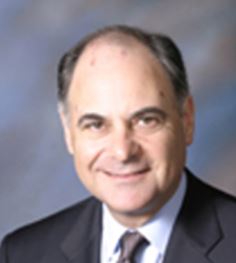“How long does it take for breast implants to look normal?”
I got breast implants 1 month ago. I want to know how long does it take for breast implants to look normal?
3 Answers
PlasticSurgeonPlasticSurgeon
One of the first things I tell all young women seeking breast implants is this, and I emphasize that, if they remember nothing else from the consultation, they should remember it: it is not "normal" to have implants put into your breasts. The range in size and appearance of otherwise normal breasts is huge and there is no such thing as the "perfect" breast as this is in the eye of the owner or beholder of those breasts. Breast augmenation is an inherently unnatural thing to do and achieving a perfectly natural, i.e. normal result is a combination of good judgement, good surgery, a compliant patient, and, yes, a little bit of luck. Having said all of this, it is common for breasts to look a bit odd or visibly augmented early on. Putting implants into a small breasts will initially make them firm and tight, and the shape will often look unnatural, with too much fullness in the upper chest. I have patients do some simple things to encourage the implants to settle: regular breast massage, taking a daily vitamin E supplement, and wearing a snug sports bra for a few months. If the implants are really too high, I will use an elastic band (bandeau) for a few weeks to help them drop. In nearly all cases, the breasts will look as they should within 3 months, usually much less. If the implants are really big or the pockets have not been properly tailored, the breasts may never look normal. I can do everything just right and in a very few patients, the implants will simply not settle as they should. This is what keeps, or should keep, plastic surgeons humble. Sensitivity in the breasts, especially the nipples can be diminished after breast augmentation. This can be permanent to some degree in about 10% of women. It may take a year or more for normal sensitivity to return.
If a plastic surgeon does not inform prospective breast implants about everything that can go wrong with the surgery, either immediately or years later, they are not doing their job.
Don't forget what I said at the top. An augmented breast is no longer normal. Normal was what you were trying to change.
Best, R. Bosshardt
Richard T. Bosshardt, MD, FACSBosshardt & Marzek Plastic Surgery Associates1879 Nightingale Lane, Suite A-2Tavares, FL 32778Tel: 352-742-0079Fax: 352-742-0059
If a plastic surgeon does not inform prospective breast implants about everything that can go wrong with the surgery, either immediately or years later, they are not doing their job.
Don't forget what I said at the top. An augmented breast is no longer normal. Normal was what you were trying to change.
Best, R. Bosshardt
Richard T. Bosshardt, MD, FACSBosshardt & Marzek Plastic Surgery Associates1879 Nightingale Lane, Suite A-2Tavares, FL 32778Tel: 352-742-0079Fax: 352-742-0059
It partly depends on your individual anatomy and ability to recover, and partly on the surgeon’s technique and ability to minimize overall inflammation and bleeding in the pocket. I have done a couple of breast augmentations over the past month, and beyond minimal bruising at the skin level (where the anesthetic was injected by me), they largely look “normal” (albeit augmented) with some expected edema (swelling) but quite minimal. I believe there are some additional things that I now do during (and before) surgery that has helped me achieve a smoother recovery. Ordinarily, you should expect your implants to “ride high” in the pocket—sometimes startlingly so (up to the collar bone in some cases!)—before they “settle” into a more natural position over the course of days and weeks post-surgery. Some surgeons will even have you “strap” your implants down with an elastic band or ACE wrap to help coax them into position.
What I have my patients do before surgery really seems to help with postop bruising (ecchymosis) and swelling (edema), which I think also helps the implants stay settled from the get-go. My patients take a course of two homeopathic vitamins, Arnica Montana and Bromelain, both of which are proven in the Dermatology literature to help. (Bromelain is basically pineapple extract, but very concentrated; you would have to eat a TON of pineapple to get the same effects!)
Secondly, during surgery, I strive for precise breast implant pocket creation and with my Anesthesiology colleagues, we administer drugs that help reduce blood loss (it should be minimal anyway!) and inflammation.
With rare exceptions, I have them administer 1-2 doses of TXA, or tranexamic acid, now embraced by Trauma and Orthopaedic surgeons to help reduce blood loss during a trauma situation or hip and knee replacement surgery. Plastic surgeons like me are starting to embrace TXA as well.
I also am a fan of Toradol, the generic name Ketorolac, which in the past was avoided out of fear of postoperative bleeding, but we have since found out that the benefit of inflammatory pain control greatly outweighs the small theoretical bleeding risk in the breasts, especially for someone healthy who does not regularly take blood thinners at baseline. I have my patients continue with oral (by mouth) pills of Toradol for five (5) days postop, alternating with Extra Strength Tylenol. After this, they switch to as-needed over-the-counter anti-inflammatory pain meds (NSAIDs) such as Aleve, Ibuprofen, or Advil. I also prescribe an as-needed muscle relaxer called Robaxin which helps a lot for my primary breast aug patients, where I routinely place the implants under the chest muscle called the pectoralis major.
I believe all of these measures lead to a smoother surgery and smoother postop recovery with next to no bleeding and minimal postop bruising and swelling, which enables the implants to sit “right in the pocket” almost immediately, if not immediately. (My personal challenge with every breast aug I do is to bloodlessly create my breast pockets!)
If it has been one (1) month since your breast augmentation surgery and you have concerns about the overall appearance, talk to your surgeon and voice those concerns. I truly hope your surgeon is a Board-Certified Plastic Surgeon.
Chances are, reassurance is all you need, but in some cases, performing strapping maneuvers or implant displacement exercises might be good tricks. (If you also had a breast lift or ‘mastopexy’ performed, then your recovery does have the potential to be more complicated, including possible wound healing issues, given the tightening of your skin combined with the weight of adding breast implants.)
What I have my patients do before surgery really seems to help with postop bruising (ecchymosis) and swelling (edema), which I think also helps the implants stay settled from the get-go. My patients take a course of two homeopathic vitamins, Arnica Montana and Bromelain, both of which are proven in the Dermatology literature to help. (Bromelain is basically pineapple extract, but very concentrated; you would have to eat a TON of pineapple to get the same effects!)
Secondly, during surgery, I strive for precise breast implant pocket creation and with my Anesthesiology colleagues, we administer drugs that help reduce blood loss (it should be minimal anyway!) and inflammation.
With rare exceptions, I have them administer 1-2 doses of TXA, or tranexamic acid, now embraced by Trauma and Orthopaedic surgeons to help reduce blood loss during a trauma situation or hip and knee replacement surgery. Plastic surgeons like me are starting to embrace TXA as well.
I also am a fan of Toradol, the generic name Ketorolac, which in the past was avoided out of fear of postoperative bleeding, but we have since found out that the benefit of inflammatory pain control greatly outweighs the small theoretical bleeding risk in the breasts, especially for someone healthy who does not regularly take blood thinners at baseline. I have my patients continue with oral (by mouth) pills of Toradol for five (5) days postop, alternating with Extra Strength Tylenol. After this, they switch to as-needed over-the-counter anti-inflammatory pain meds (NSAIDs) such as Aleve, Ibuprofen, or Advil. I also prescribe an as-needed muscle relaxer called Robaxin which helps a lot for my primary breast aug patients, where I routinely place the implants under the chest muscle called the pectoralis major.
I believe all of these measures lead to a smoother surgery and smoother postop recovery with next to no bleeding and minimal postop bruising and swelling, which enables the implants to sit “right in the pocket” almost immediately, if not immediately. (My personal challenge with every breast aug I do is to bloodlessly create my breast pockets!)
If it has been one (1) month since your breast augmentation surgery and you have concerns about the overall appearance, talk to your surgeon and voice those concerns. I truly hope your surgeon is a Board-Certified Plastic Surgeon.
Chances are, reassurance is all you need, but in some cases, performing strapping maneuvers or implant displacement exercises might be good tricks. (If you also had a breast lift or ‘mastopexy’ performed, then your recovery does have the potential to be more complicated, including possible wound healing issues, given the tightening of your skin combined with the weight of adding breast implants.)






